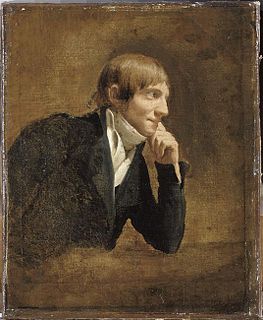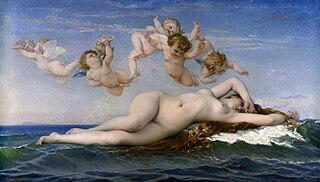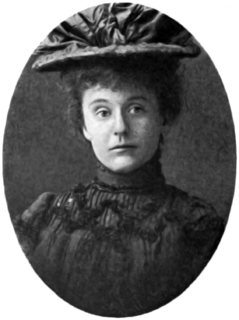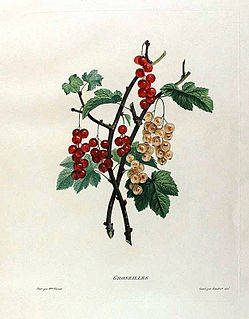
Studies of Flowers from Nature is a 19th-century botanical copybook notable for the high quality of its illustrations by an artist known only as "Miss Smith." [1] [2]

Studies of Flowers from Nature is a 19th-century botanical copybook notable for the high quality of its illustrations by an artist known only as "Miss Smith." [1] [2]
Combining an instruction manual "for young ladies" with a coloring book, Studies of Flowers from Nature is illustrated by full-page, full-color plates of specimen flowers shown with their leaves. The artist, bylined as "Miss Smith," offers advice on drawing and on preparing colors for painting watercolors of flowers [1] [3] and includes a complete second set of plates in which the flowers are drawn only in outline so that the buyers can color them in themselves. Such copybooks were popular in the early 19th century, but few have survived; it is thought that owners tended to discard them after completing their painted pages. [1] [4]
The book was published by Ackermann of London by subscription, a common practice at the time, and sold for 5 guineas as single volume; it was also obtainable in 10 monthly parts issued between 1818 and 1820. One subscriber was Princess Elizabeth, daughter of King George III. Of the roughly 100 copies that were subscribed for, only a small handful are known to have survived. Studies of Flowers from Nature is valued today for the exceptionally high quality of the flower paintings. [1] [3]
Very little is known about Miss Smith, including her full name. It is possible that she may be the same person as another little-known botanical artist, Miss J. Smith, whose work appeared in William Sole's Menthae Britannicae, although that was published some twenty years earlier. [1] Smith is recorded in a contemporary newspaper as "of Adwick Hall near Doncaster", [2] and she wrote that her flowers came from the garden of a Mr. W. Crowder in Doncaster. [1] There was a women's boarding school at Adwick Hall in the early 19th century, and Miss Smith may have been an instructor there. [3]

Pierre-Joseph Redouté, was a painter and botanist from Belgium, known for his watercolours of roses, lilies and other flowers at Malmaison, many of which were published as large, color stipple engravings. He was nicknamed "the Raphael of flowers" and has been called the greatest botanical illustrator of all time.

Academic art, or academicism or academism, is a style of painting, sculpture, and architecture produced under the influence of European academies of art. Specifically, academic art is the art and artists influenced by the standards of the French Académie des Beaux-Arts, which was practiced under the movements of Neoclassicism and Romanticism, and the art that followed these two movements in the attempt to synthesize both of their styles, and which is best reflected by the paintings of William-Adolphe Bouguereau, Thomas Couture, and Hans Makart. In this context it is often called "academism", "academicism", "art pompier" (pejoratively), and "eclecticism", and sometimes linked with "historicism" and "syncretism".

The word miniature, derived from the Latin verb miniare indicates a small illustration used to decorate an ancient or medieval illuminated manuscript; the simple illustrations of the early codices having been miniated or delineated with that pigment. The generally small scale of such medieval pictures has led to etymological confusion with minuteness and to its application to small paintings, especially portrait miniatures, which did however grow from the same tradition and at least initially used similar techniques.

Joris Hoefnagel or Georg Hoefnagel was a Flemish painter, printmaker, miniaturist, draftsman and merchant. He is noted for his illustrations of natural history subjects, topographical views, illuminations and mythological works. He was one of the last manuscript illuminators and made a major contribution to the development of topographical drawing.

Maria Sibylla Merian was a German-born naturalist and scientific illustrator, a descendant of the Frankfurt branch of the Swiss Merian family. Merian was one of the first European naturalists to observe insects directly.

The Botanical Magazine; or Flower-Garden Displayed, is an illustrated publication which began in 1787. The longest running botanical magazine, it is widely referred to by the subsequent name Curtis's Botanical Magazine.

Frances Parsons redirects here, for those of a similar name, see Francis Parsons (disambiguation)

Henry Charles Andrews, was an English botanist, botanical artist and engraver.

Flora Londinensis is a book that described the flora found in the London region of the mid 18th century. The Flora was published by William Curtis in six large volumes. The descriptions of the plants included hand-coloured copperplate plates by botanical artists such as James Sowerby, Sydenham Edwards and William Kilburn.

Flora Graeca was a publication of the plants of Greece in the late 18th century, resulting from a survey by John Sibthorp and Ferdinand Bauer. The botanical descriptions and illustrations were to become highly valued by the English audience; the finely crafted and illustrated work was of both scientific and horticultural interest.

Matilda Smith (1854–1926) was a botanical artist whose work appeared in Curtis's Botanical Magazine for over forty years. She became the first artist to depict New Zealand's flora in depth, the first official artist of the Royal Botanic Gardens at Kew, and the second woman to become an associate of the Linnaean Society. The standard author abbreviation M.Sm. is used to indicate this person as the author when citing a botanical name.

Gift books, literary annuals or a keepsake were 19th-century books, often lavishly decorated, which collected essays, short fiction, and poetry. They were primarily published in the autumn, in time for the holiday season and were intended to be given away rather than read by the purchaser. They were often printed with the date of the coming new year, but copyrighted with the actual year of publication.

A copybook, or copy book is a book used in education that contains examples of handwriting and blank space for learners to imitate.

Pieter Casteels III (1684–1749) was a Flemish painter and engraver mainly known for his flower pieces, game pieces and bird scenes. He spent a significant portion of his life in England where he had a varied career as a still life painter, printmaker and textile designer.
James Marion Shull (1872–1948) was an American botanist known for his iris cultivars and botanical illustrations.
Mary Lawrance was a British botanical illustrator who specialized in flowers. She also taught botanical illustration. She is best known for producing the earliest published work on roses.

Henriette Vincent (1786–1834) was an early 19th-century botanical painter at the French court.

Clarissa Munger Badger (1806–1889) was a mid 19th century American botanical illustrator best known for three volumes of flower paintings accompanied by poetry. She also painted on textiles.
Elsie Louise Shaw was a naturalist and botanical artist many of whose watercolors are now in the collection of the Gray Herbarium at Harvard University.
Skira Editore and Editions d'Art Albert Skira, also known as Skira, is a publishing firm founded by Albert Skira in Switzerland in 1928 and now based in Italy. The firm is known particularly for its art books of "vastly improved quality of colour reproduction".
| This article about a book on botany or plants is a stub. You can help Wikipedia by expanding it. |